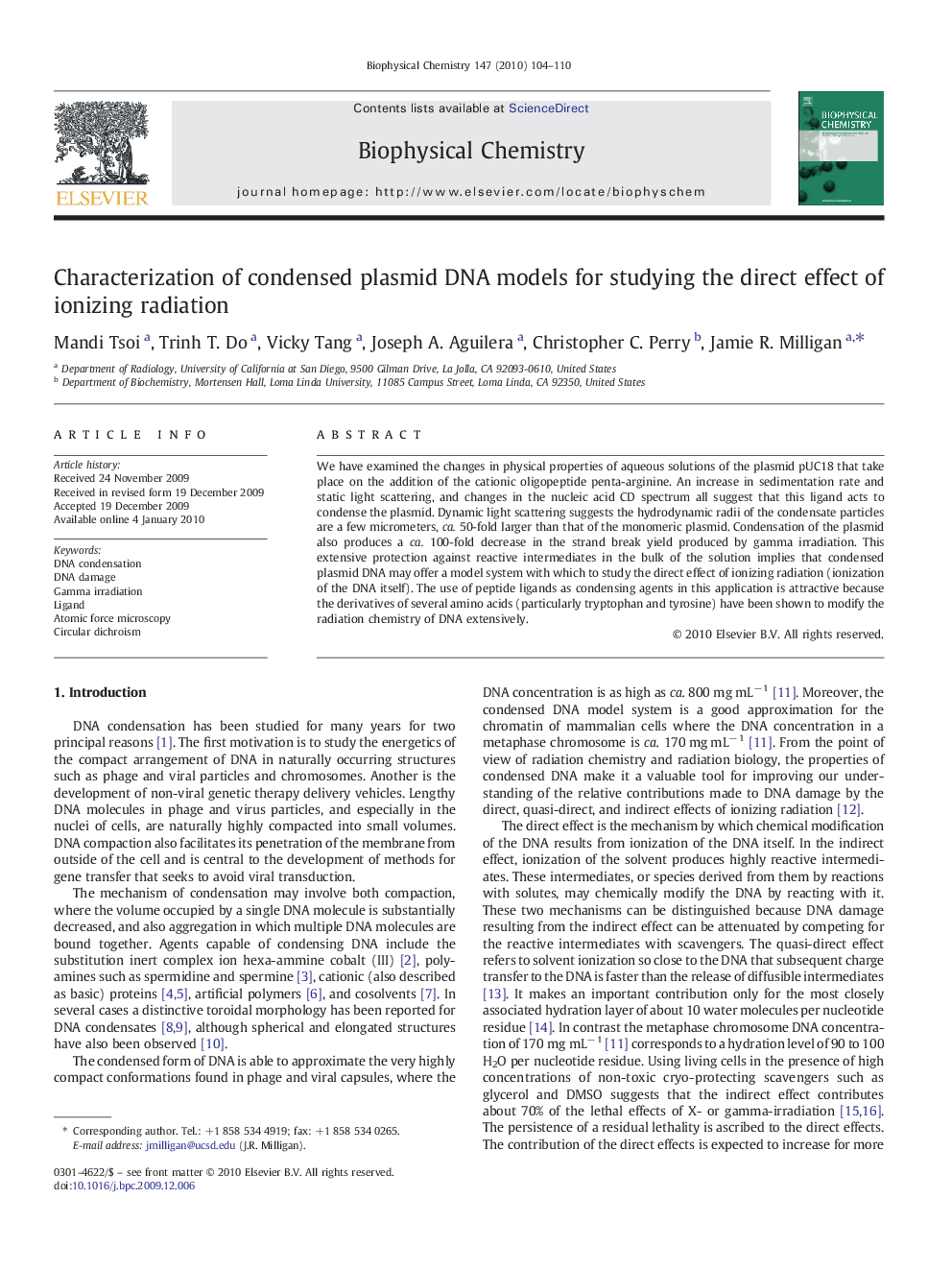| Article ID | Journal | Published Year | Pages | File Type |
|---|---|---|---|---|
| 5371703 | Biophysical Chemistry | 2010 | 7 Pages |
We have examined the changes in physical properties of aqueous solutions of the plasmid pUC18 that take place on the addition of the cationic oligopeptide penta-arginine. An increase in sedimentation rate and static light scattering, and changes in the nucleic acid CD spectrum all suggest that this ligand acts to condense the plasmid. Dynamic light scattering suggests the hydrodynamic radii of the condensate particles are a few micrometers, ca. 50-fold larger than that of the monomeric plasmid. Condensation of the plasmid also produces a ca. 100-fold decrease in the strand break yield produced by gamma irradiation. This extensive protection against reactive intermediates in the bulk of the solution implies that condensed plasmid DNA may offer a model system with which to study the direct effect of ionizing radiation (ionization of the DNA itself). The use of peptide ligands as condensing agents in this application is attractive because the derivatives of several amino acids (particularly tryptophan and tyrosine) have been shown to modify the radiation chemistry of DNA extensively.
